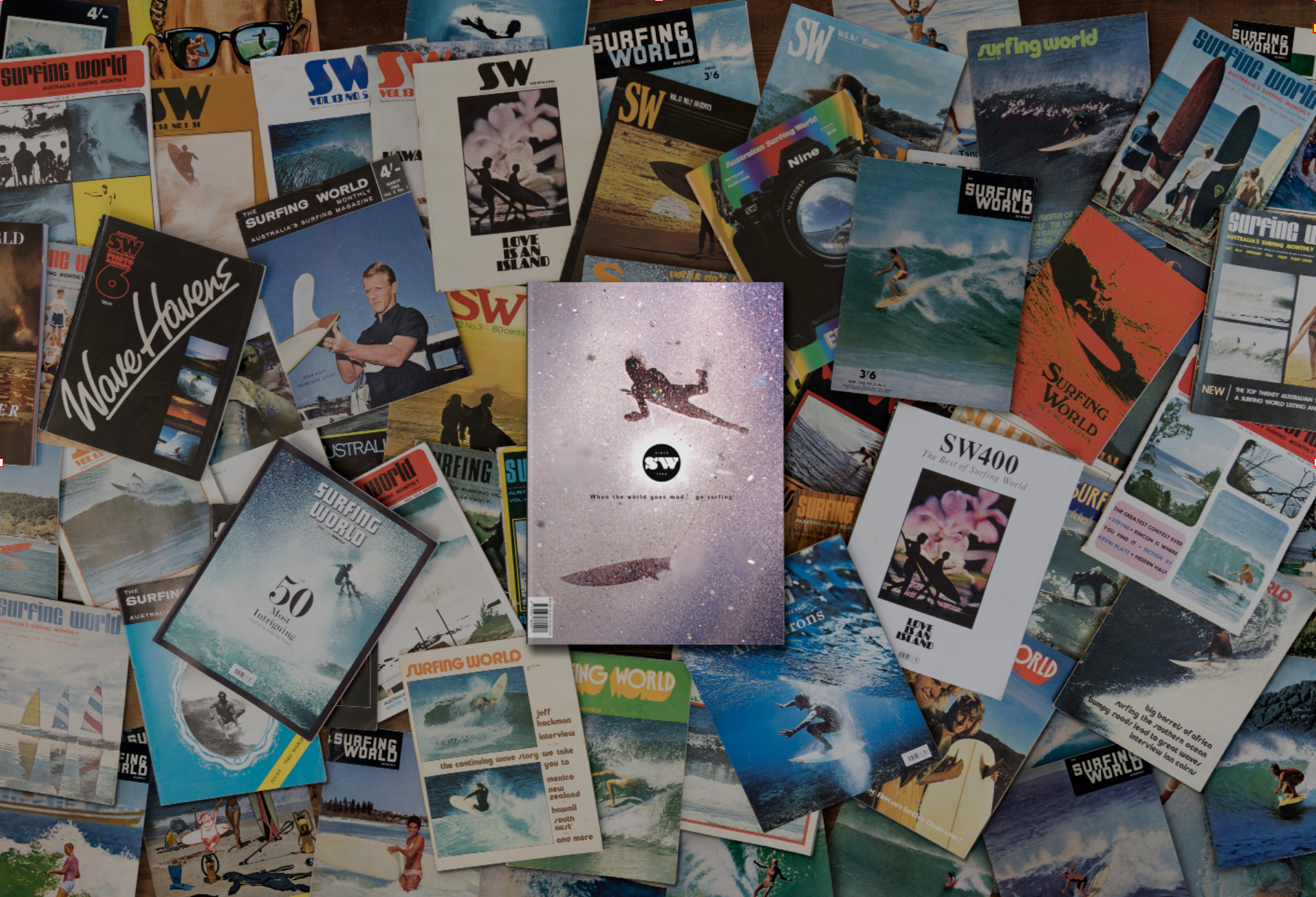SINCE 1962… ONWARDS AND SIDEWAYS
The same week Jon Frank and I officially became the new owners of Surfing World, across in California, Surfer magazine closed. Its staff were ushered out the door and the lights turned off on a magazine that had been around since 1960 and was regarded as the “Bible of the Sport”. Even though there was nobody left in the office their Instagram account kept posting, in the same way that the fingernails on a dead body keep growing in the days after death. But even that soon flickered and died and Surfer was gone. A cultural icon had fallen, and Surfing World was now the oldest surf mag in the world. Nineteen-sixty-two, onwards and sideways!
What a time to buy a surf mag. Just 15 years ago they were thriving businesses. The surf industry was flying, and magazines were still the primary lens to view surf culture. Grubby grommet hands fingered every page and surfing imaginations ran wild. Trouble loomed over the horizon though. Surf media soon switched from analogue to digital, readers became conditioned to free content, readers stopped reading, surfers blitzed their senses online and the decline of surf print began. To then buy Surfing World in the dying days of surf magazines requires a special kind of madness. As the new owners though, the way we figure it, if we’re mad enough to buy a surf magazine, we might also be mad enough to make it work.
At first, Frank and I took it on from a sense of duty. Frank has worked at SW for 20 years. I’ve worked here 10. Both of us grew up reading Surfing World as a rite of passage. We were kids of the Hugh McLeod and Bruce Channon era of the magazine, a fantastic time where road trips drove endless highways around the Australian coast, creating a sense of time and space to think about surfing more deeply. It often didn’t even need words to do it. The SW photo annuals allowed the surfing imagination to run wild. Ross Marshall’s mirrored sunglasses on the cover reflecting a perfect lineup that revealed itself completely when you opened the magazine was psychic transportation for young surfing minds. The nostalgic duty to keep that flame burning was strong, but we knew full well nostalgia alone wouldn’t save it.
But the more we looked at it, the more Surfing World seemed like an opportunity. This might be the worst time to buy a surf magazine… but it might also be the best. These are strange days. While the world has gone completely fucking bonkers this year, people have gone surfing. Lots of them. Stoke levels trumped viral levels. Surfing has stopped them climbing the walls. People have needed it, a momentary flash of total freedom in an otherwise locked down world.
And from that has emerged the new Surfing World.
We want to recreate that same sense of time and space the old Surfing World had, but through a modern lens. We want the new Surfing World to have the same wild spirit, but we also want it to be a statement of what surf culture is now. We want to make big, beautiful mags that gave plenty of room to showcase the work of our writers and photographers. We’re printing quarterly, but in between we’ll publish online, strong pieces that speak to core surf culture. No tabloid clickbait. No cheap shit.
We also don’t really want to run Surfing World as a business. Frank and I are terrible fucking businessmen, so we made the decision to run SW more as a social enterprise. If we can position Surfing World at the centre of a whole heap of good people, doing good shit, then that’s something. The mag serving a higher purpose. The mag saying something. You’ll notice in this issue ads for environmental groups, community groups, mental health groups. There’ll be ads for solo shapers, mum-and-dad surf shops and cultural projects. Our partners donate the pages.
This new SW is also very much an exercise in backyard publishing. The first issue of Surfing World’s new era was produced in the back room of a rental in Jan Juc, pulled together between spring surfs at Winkipop. The magazine has gone full circle, back to its roots, published independently by the surfers who own it. There’s a real freedom in that. We hope you get a sense of that and we hope you can support us by buying a sub.
Surfing World goes on, because even if print’s dead, surf culture definitely isn’t.








